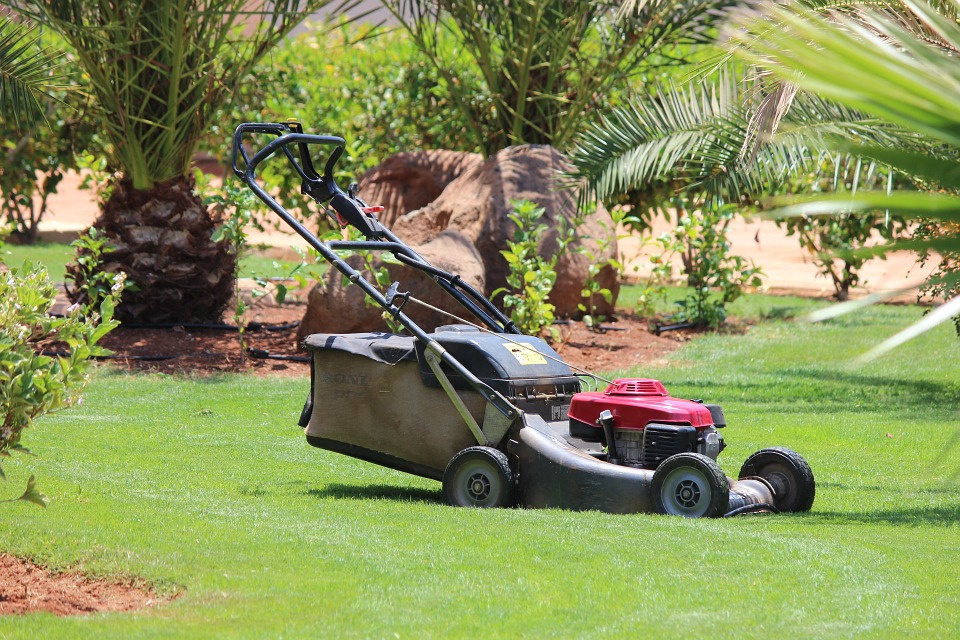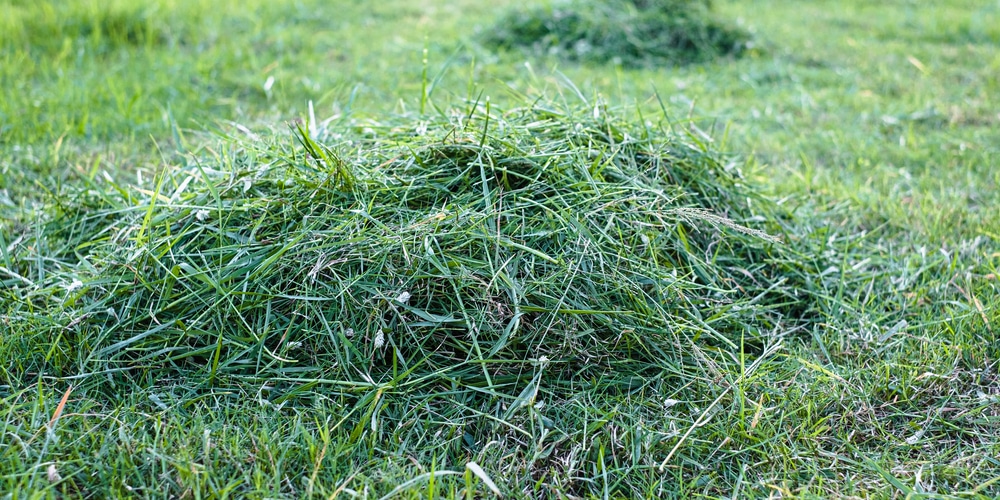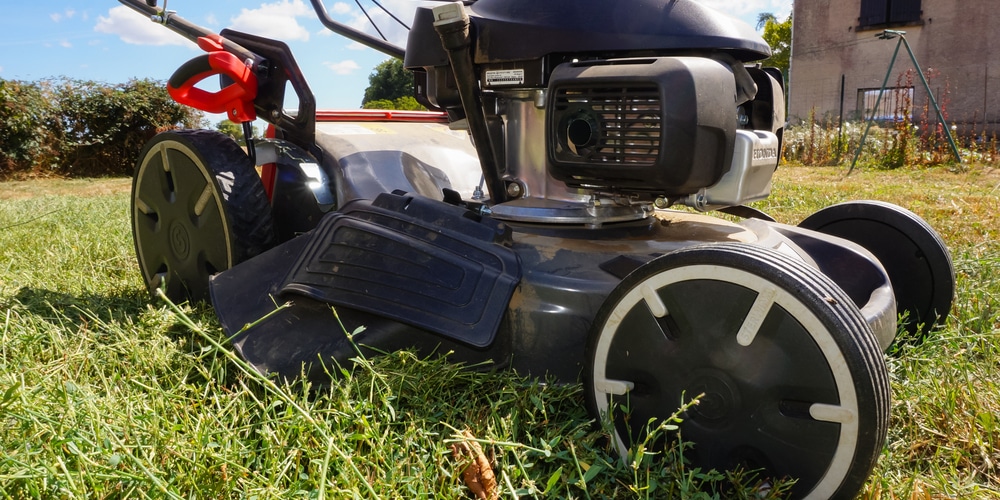One issue frequently arises in lawn care is what to do with the grass clippings. There is some debate about the best way to handle them. Should you throw them out? Should you mulch them? Whats the difference between mulching vs side discharge?
When it comes to lawn mowing, there are three main ways to dispose of the grass clippings: mulching, side discharge, and bagging.
Each method has its benefits and drawbacks, so it’s essential to understand the differences before deciding which is right for your lawn.
This article will discuss each of these methods in detail and help you decide which one is best for you.
Bagging

What Is Bagging?
Bagging is a term used in lawn care to describe removing grass clippings, leaves, and other debris from the lawn.
This is typically done with a bagging attachment on a lawn mower, although some people use handheld blowers or garden vacuums. Bagging is essential for two reasons.
The Benefits of Bagging
There are several benefits to bagging your grass clippings.
- It is the best way to keep your lawn looking neat.
- They are less likely to hurl a rock or other object and cause harm.
- Bagging also helps prevent thatch buildup, which can eventually lead to problems with water drainage and nutrient uptake.
- Another benefit of bagging is that it allows you to compost the grass clippings. Compost is an excellent way to add nutrients to your lawn and improve its health.
The Drawbacks of Bagging
Despite the benefits, some drawbacks to bagging your grass clippings.
- A downside to bagging is that it can be expensive. You will need to purchase bags or an attachment for your mower, and you may need to pay for disposal.
- The biggest downside is that it can be time-consuming and labor-intensive. If you have a large lawn, it can take several hours to bag all the clippings.
- Another drawback is that you need to have a place to store the bags of clippings until you are ready to compost them or dispose of them. This can be not easy if you don’t have a lot of storage space.
Mulching
What Is Mulching?
Mulching is a lawn care technique that involves leaving the grass clippings on the lawn after mowing.
The clippings will eventually decompose and add nutrients to the soil. Mulching is an excellent way to fertilize your lawn without using chemicals.
It is also an excellent way to conserve water because the clippings will help hold moisture in the soil.
The Benefits of Mulching
There are several benefits to mulching your grass clippings.
- It is an excellent way to fertilize your lawn without using chemicals. The grass clippings will eventually decompose and add nutrients to the soil.
- Mulching also helps conserve water because the clippings will help hold moisture in the soil.
- Another benefit is that it can reduce thatch buildup because the clippings will decompose quickly.
The Drawbacks of Mulching
Despite the benefits, there are also some drawbacks to mulching.
- One downside is that if you have a lot of leaves, they will eventually cover the lawn and prevent the grass from getting enough sunlight.
- Mulching can encourage the growth of weeds because the clippings will hold moisture in the soil and provide a place for weed seeds to germinate.
- It can also be difficult to mow over the clippings, especially wet ones.
Side Discharge
What Is Side Discharge?
Side discharge is a lawn care technique that involves mowing the grass and allowing the clippings to fall to the side of the mower.
The clippings will eventually decompose and add nutrients to the soil. Side discharge is an excellent way to fertilize your lawn without using chemicals.
It is also a good way to conserve water because the clippings will help hold moisture in the soil.
The Benefits of Side Discharge
There are several benefits to side discharging your grass clippings.
- It is an excellent way to fertilize your lawn without using chemicals. The grass clippings will eventually decompose and add nutrients to the soil.
- Side discharge also helps conserve water because the clippings will help hold moisture in the soil.
- Another benefit is that it can reduce thatch buildup because the clippings will decompose quickly.
The Drawbacks of Side Discharge
Despite the benefits, there are also some drawbacks to side discharging.
- One downside is that the clippings can be difficult to collect if you want to compost them.
- Another drawback is that they can be a nuisance if you have sidewalks or other hard surfaces next to your lawn. The clippings can also blow onto these surfaces and be difficult to clean up.
- Side discharge can also encourage the growth of weeds because the clippings will hold moisture in the soil and provide a place for weed seeds to germinate.
Mulching vs side discharge: Which Is The Best Option
One of the most common questions people ask when shopping for a lawn mower is, “Which is the best option: side discharge, bagging, or mulching?” While there are pros and cons to each option, ultimately, it comes down to personal preference.
Side discharge is the traditional method of grass collection and is still the most popular choice among homeowners. The main advantage of side discharge is that it is very easy to use; attach the grass bag and mow as usual.
However, side discharge does have some disadvantages. First, it can be difficult to control the direction of the grass clippings, which can lead to a messy lawn. Second, side discharge mowers tend to be less effective at mulching than other mowers.
Bagging is another popular option for grass collection. The advantage of bagging is that it provides a neat appearance to your lawn. Bagging also has the added benefit of collecting more debris than side discharge, making it a good choice for properties with many leaves or twigs.
However, one downside of bagging is that emptying the bag after each mowing can be time-consuming.
Mulching is the third option for grass collection, becoming more popular among homeowners. Mulching has many of the same benefits as side discharge, including the fact that it is an excellent way to fertilize your lawn without using chemicals.
Mulching also helps to control thatch buildup and can reduce the time you spend mowing. However, one downside of mulching is that it can be difficult to get a clean cut when wet grass.
Mulching vs side discharge: In A Nutshell
Mulching, side discharge, and bagging are valid grass collection options. Ultimately, it comes down to personal preference. If you are looking for an easy-to-use option, side discharge is a good choice.
Bagging is a better option if you want a neat lawn. And if you are concerned about thatch buildup or want to fertilize your lawn without using chemicals, mulching is the best choice.
Whatever option you choose, the most important thing is to mow regularly and keep your lawn healthy.

